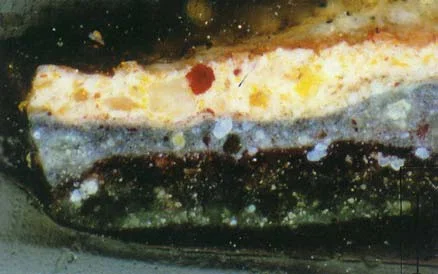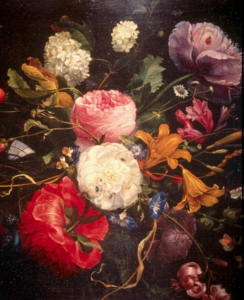
Introduction
In our daily life pigments are important for colouring of household utensils, e.g. varnishes, plastics, textiles, writings or art paints. The natural scientific identification of pigments has some problems, because of their insolubility in common solvents. Especially when one deals with examinations of very small sample amounts or wishes to perform non-destructive analysis, e.g. in forensic laboratories or analysis of art paintings. Raman spectroscopy turns out to be a ideally suited technique to solve these analytical problems. Questions of product identification, date analysis or detection of falsifications can now be solved using Raman spectroscopy. This analytical method is a powerful instrument for all these questions.
Special fields in pigment analysis
A major important forensic question is the study of varnish fragments of cars after hitand-run offences.
This kind of analysis is done by comparison of the varnish that is found at the accident place and defined varnishes of car manufactories.
Another area is the association of plastics or textiles to commercial products. Analysing the pigments is often helpful in addition to material identification. In the field of art analysis pigments often give information about the age, production processes, restorations or falsifications of arts. Combined with historical information this supports the valuation of arts.

Learn More?
Please click on ‘Request Application Note’ and download the full application note ‘The non-destructive and in-situ analysis of pigments’.
